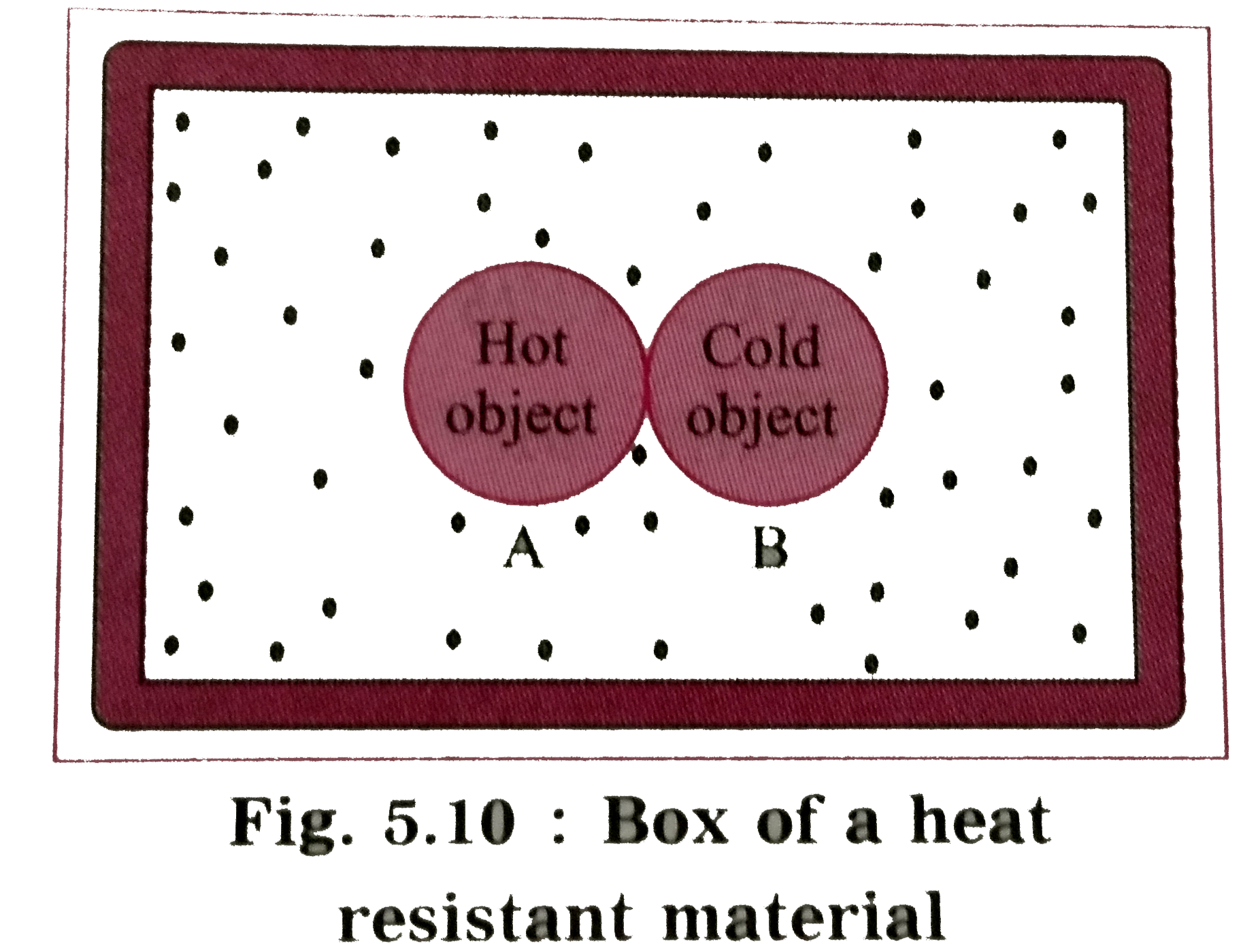Principle of heat exchange:
Video Solution
Text Solution
Suppose two objects A and B at different temperature T1 and T2 respectively are enclosed in a box of heat resistant material as shown in figure.

Let m1= mass of A, m2 = mass of B, c1= specific heat capacity of A, c2= specific heat capacity of B and T = common temperature attained by A and B after the heat exchange between A and B. Here,no heatleaves the box or enters the box from outside. Hence, ifT1>T2, heat energy lost by A(Q1) = heat energy gained by B(Q2).
∴m1c1(T1−T)=m2c2(T−T2)
|
Topper's Solved these Questions
- HEATBOOK - NAVNEET PUBLICATION - MAHARASHTRA BOARDCHAPTER - HEATEXERCISE - NUMERICAL PROBLEMS FOR PRACTICE
12 Videos
- HEATBOOK - NAVNEET PUBLICATION - MAHARASHTRA BOARDCHAPTER - HEATEXERCISE - Textbook page 65
6 Videos
- GRAVITATION BOOK - NAVNEET PUBLICATION - MAHARASHTRA BOARDCHAPTER - GRAVITATION EXERCISE - Solve the following examples/numerical problems :
37 Videos
- LAWS, RULES, UNITS AND DEFINITIONS BOOK - NAVNEET PUBLICATION - MAHARASHTRA BOARDCHAPTER - LAWS, RULES, UNITS AND DEFINITIONS EXERCISE - Carbon Compounds
18 Videos
Similar Questions
Which of the following devices works on the principle of heating effect of current?
View SolutionProve the theorem converse to the one of ξ28.8: if in the course of the heat exchange between two bodies contained in a closed and an adiabatically isolated system the entropy rises, then the heat transfer will be in the direction from the heated body to the cold one.
View Solution
Knowledge Check
Which of the following electrical appliances work on the principal of the heating efect of electric current ?
AElectric ironBElectric heaterCElectric bulbDAll of the aboveStatement I: The specific heat of a gas in an adiabatic process is zwero but it is infinite in an isothermal process.
Statement II: Specific heat of a gas is directly proportional to heat exchanged with the system and inversely proportional to change in termperature.AStatement I: is true, Statement II is true and Statement II is the correct explanation for Statement I.BStatement I: is true, Statement II is true and Statement II is NOT the correct explanation for Statement I.CStatement I is true, Statement II is false.DStatement I is false, Statement II is true.A bill of exchange is:
AA conditional promise to payBAn unconditional order to payCAn unconditional promise to payDA conditional order to pay
State whether all the bulbs we use work on the principle of heating effects of electric current ?
View SolutionIn………………..process, no heat is exchanged between the system and the surroundings.
View SolutionA bill of exchange is:
View SolutionA bill of exchange is:
View SolutionAccording to Prevost's theory of heat exchange, the heat exchange shops at
View Solution
